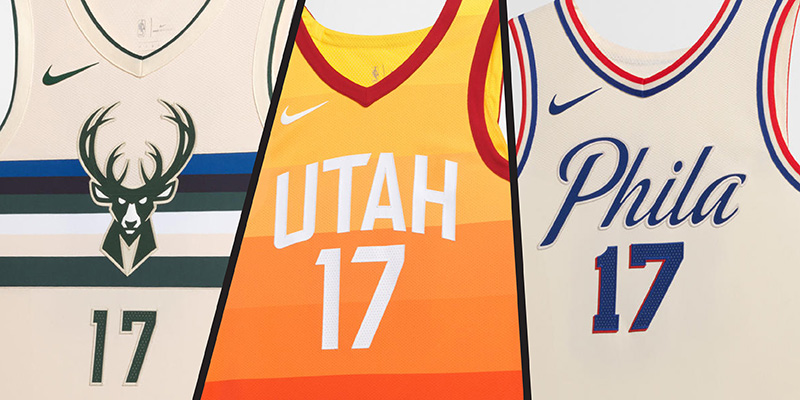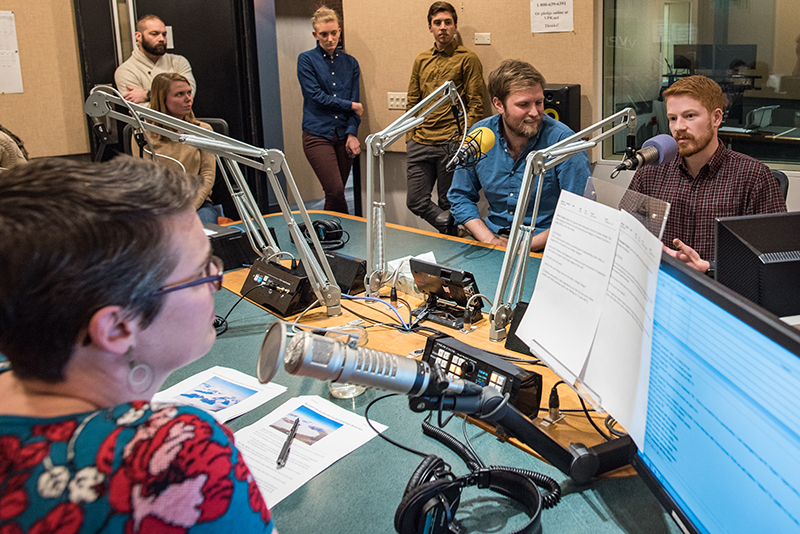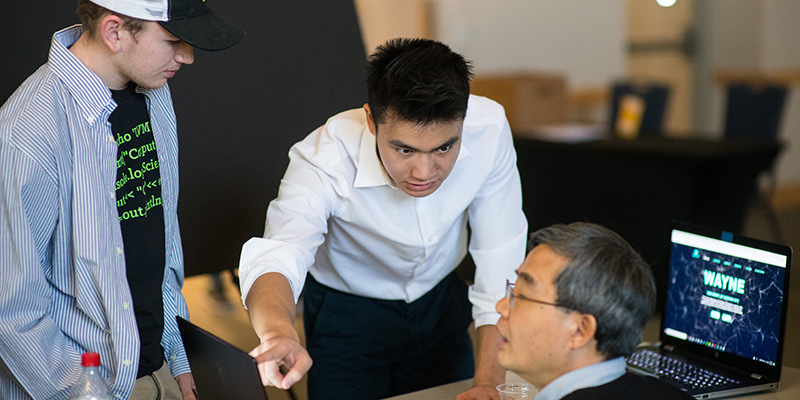Over the years, mechanical engineering professor Dryver Huston and his team have become adept at understanding the needs of what they’ve always thought of as their main customers — the federal agencies that fund their research.
“It’s a bit of a mystery, but we think hard and we can often figure out what the U.S. government wants,” he says.
But what about the needs of those other customers, the ones who might actually buy the products and services that grow out of Huston’s research, which nearly always has a tech transfer bent?
“We don’t think about them so much,” he admits.
Among faculty seeking to translate their research findings into commercial ventures, Huston’s orientation is the norm, says UVM’s vice president for research Richard Galbraith.
“Faculty have incredible expertise in a specific area,” he said. “But they frequently don’t have expertise in projecting whether or not people outside of their area would be interested in buying a product based on their research. Without that information, it’s like setting off without a compass.”
Thanks to a National Science Foundation I-Corps training that was held on the UVM campus last month, the first ever, a group of eight entrepreneurially minded faculty and student teams — including Huston’s — have gotten to know quite a bit about the needs of their customers.
The group received a full day of instruction from trainers from an I-Corp regional hub in upstate New York — called the Upstate New York (UNY) I-Corps Node — on why customer discovery is central to business success, how to identify key customers and what to talk with them about.
Then, over a two-week period, each team set out to interview 30 potential customers, reporting on the results during two remote check-in sessions with the trainers and finally in a half-day session that capped the training.
“It was a really good experience,” said Huston, whose research group is commercializing an intelligent ground-penetrating radar system that municipalities can use to map underground infrastructure. Other members of Huston’s team who took the training included electrical engineering professor Tian Xia and post-doctoral student Dylan Burns, who conducted the interviews and gave the team’s presentations.
The university plans to repeat the I-Corps training in the spring and offer it twice a year in the future, working in coordination with the UNY I-Corps node and developing I-Corps trainers from the State of Vermont and the Vermont Center of Emerging Technologies who will help with future trainings.
Long Time Coming
UVM has long wanted to give faculty access to I-Corps, a division of NSF whose mission is to use the customer discovery process to help entrepreneurial faculty explore the commercialization potential of their research for the benefit of society.
Enter UNY I-Corps, led by group of entrepreneurs and educators from Cornell, RIT and the University of Rochester, one of nine regional I-Corps hubs spread around the county.
“Our program director at NSF encouraged us to bring I-Corps to Vermont,” said Shannon Sullivan, regional director of the node. “They wanted to make sure Vermont entrepreneurs were getting the training and opportunity to participate in the national I-Corps program.”
“When they reached out to UVM, our response was immediate – let’s do this,” said Corine Farewell, director of UVM Innovations, who knew members of the UNY I-Corps from her days working in the tech transfer offices of the University of Rochester and Cornell.
By operating under the auspices of the upstate New York node, Farewell said, which coordinates I-Corps trainings for a range of other schools in upstate New York and surrounding states, UVM’s program became instantly viable.
To make it sustainable over the long run, I-Corps trainings like the one held at UVM are available to a wide variety of groups in Vermont. “Any Vermont startup or potential startup, whether at UVM, Middlebury, Champlain, Vermont Tech or Norwich, or even outside higher education, is eligible to apply,” Farewell said.
Going National: $50,000, Seven Weeks and 100 Interviews
UNY I-Corps calls the two-week training held at UVM its short course “because it’s like a mini-version of what the national I-Corps Teams program offers,” Sullivan said.
Teams in the short course who excel in the customer discovery process and who have a deep STEM technology innovation are eligible to apply to the national program, a seven-week training that comes with a $50,000 grant so participants can travel anywhere in the United States to conduct at least 100 customer discovery interviews.
Teams who complete the national I-Corps Teams program have a much higher rate of success when applying for an SBIR or STTR grant, which is frequently their next step, Sullivan said.
“I think this higher success rate among I-Corps grads is related to the fact that they have developed and tested a data-based business model,” said Sullivan.
The national I-Corp Teams program requires participation in the form of a three-person team: an entrepreneurial lead, usually a graduate student or post-doc, who leads the team and the customer interview process; a technical lead, who is usually the faculty member; and an industry mentor, who has real world startup experience.
Academic researchers who already have NSF funding, as Huston does, are automatically eligible to apply for the national I-Corps Teams program, and his team is strongly considering participating. Post-doc Burns would be the entrepreneurial lead. Having also done the short course strengthens their application.
Huston has gotten religion about the value of the I-Corps approach.
“They asked us some tough questions about our product and our customer base,” he said. “You don’t always think about the tough questions; you often ignore the tough questions. Just because your product is cool doesn’t mean it’s a viable thing.”
Faculty and student entrepreneurs interested in participating in the spring I-Corps training should contact UVM Innovations at innovate@uvm.edu or 656-8780.
Source: UVM News




